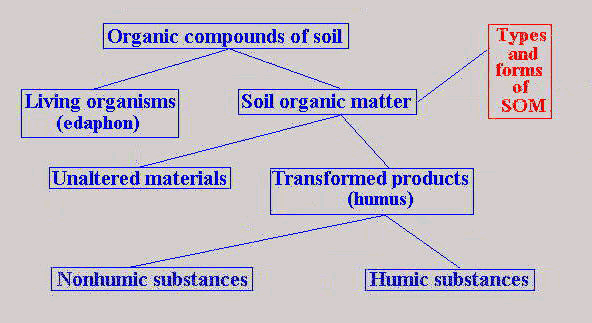- identifiable, high-molecular-weight organic materials such as polysaccharides and proteins,
- simpler substances such as sugars, amino acids, and other small molecules,
- humic substances.
Distribution SOM is shown on the picture:

Organic compounds of soil - live organisms and their undecomposed, partly decomposed and completely decomposed remains as well as products of their transformation.
Living organisms alive - edaphon.
Soil organic matter - non-living components which are a heterogeneous mixture composed largely of products resulting from microbal and chemical transformations of organic debris. Soil organic matter can exist in different morphological patterns, which are the bases of the classification of so called forms and types of humus.
Unaltered materials - fresh and non-transformed components of older debris.
Transformed products - (humus) - bearing no morphological resemblance to the structures from which they were derived.These transformed components are reffered to as the humification processproducts.
Humic substances- a series of relativelyhigh-molecular-weight, brown to black colored substances formed by secondary synthesis reactions. The term is used as a generic name to describe tocolored material or its fractions obtained on the basis of solubilitycharacteristics:
Nonhumic substances- compounds belongingto known classes of bichemistry, such as :